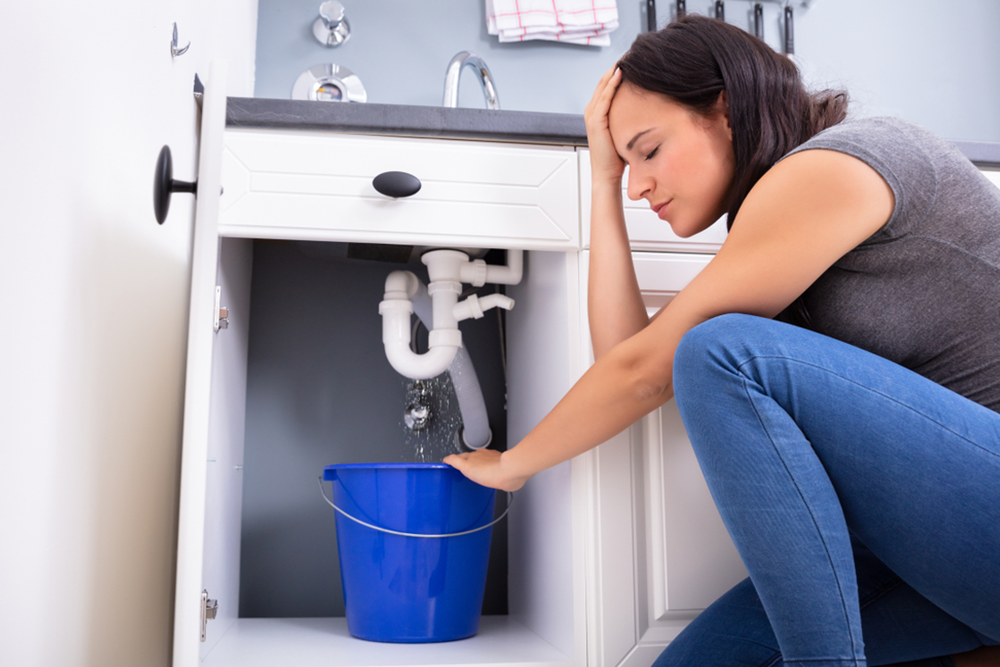My Comprehensive Guide to Fixing a Leaky Garbage Disposal
My Comprehensive Guide to Fixing a Leaky Garbage Disposal
Blog Article
Do you find yourself trying to locate selective information Why Is My Garbage Disposal Leaking From the Bottom??

Garbage disposals are necessary kitchen home appliances that assist in dealing with food waste successfully. However, a leaking waste disposal unit can be an irritating and messy problem to handle. Luckily, several leaks can be taken care of quickly with a few simple actions. In this article, we will review exactly how to fix a leaking waste disposal unit effectively.
Intro
Garbage disposals are mounted under kitchen area sinks and are developed to shred food waste right into smaller pieces, permitting it to go through the pipes system easily. While these gadgets are normally trusted, leakages can happen over time due to deterioration, loosened links, or damage to the unit.
Step-by-Step Overview to Dealing With a Leaking Garbage Disposal
Turn Off the Power
Before trying any repair work, ensure that the power to the garbage disposal unit is turned off to avoid the danger of electrical shock.
Locate the Leak
Recognize the specific area of the leakage and identify the reason
Tighten Connections
Make use of a wrench to tighten any loosened connections in between the disposal system and the plumbing system.
Replace Seals or Gaskets
If the leakage is due to used seals or gaskets, remove the old parts and replace them with new ones.
Patching Fractures or Holes
For fractures or openings in the disposal system, use epoxy or a suitable patching material to seal the broken location.
Recognizing the Resource of the Leakage
Prior to attempting to repair a leaking waste disposal unit, it is necessary to identify the resource of the leakage. This can typically be done via aesthetic inspection or by performing easy tests.
Visual Examination
Check the waste disposal unit unit very carefully for any type of indications of water leak. Pay close attention to locations around seals, gaskets, and link points.
Testing for Leakages
One method to test for leakages is by running water with the disposal system and looking for any noticeable signs of leakage.
Typical Causes of Leakages in Trash Disposals
Worn Seals and Gaskets
Seals and gaskets play a critical function in avoiding water from leaking out of the garbage disposal. In time, these components can wear away, leading to leakages around the disposal system.
Loose Connections
The links between the waste disposal unit and the plumbing system can become loosened gradually, creating water to leak out during operation.
Fractures or Openings in the Disposal Device
Physical damage to the waste disposal unit, such as fractures or openings in the real estate, can additionally cause leaks.
Tools and Products Needed for Repairing a Dripping Garbage Disposal
Before beginning the repair work procedure, collect the necessary devices and products, consisting of a screwdriver, flexible wrench, plumbing technician's putty, substitute seals or gaskets, and epoxy or patching material for fixing fractures or holes.
Examining the Waste Disposal Unit After Repair
When the fixing is full, evaluate the waste disposal unit by running water via it to ensure that the leak has actually been dealt with.
Preventive Maintenance Tips to Prevent Future Leakages
To avoid future leaks, it is necessary to carry out regular maintenance on your waste disposal unit. This includes keeping it clean, staying clear of putting non-food products or hard objects down the disposal, and occasionally looking for leaks or other issues.
Verdict
In conclusion, taking care of a dripping waste disposal unit is a relatively straightforward process that can be completed with basic devices and products. By adhering to the actions outlined in this article and practicing preventative upkeep, you can maintain your waste disposal unit in good working problem and prevent pricey repair services in the future.
What to Do About a Leaking Garbage Disposal
A leaking garbage disposal often goes unnoticed until you confront a sopping cabinet, a foul-smelling puddle, or an audible drip-drip-drip from the unit. The fix can be frustrating, too, because the leak can stem from a number of components in the system. Fortunately, with a little sleuthing, you can zero in on the leak and—depending on the exact location—stop the icky oozing and repair the component that caused it. Worst case scenario, if it turns out that the garbage disposal must be replaced, installing a new one is a reasonable do-it-yourself task for those with basic plumbing skills. Read on to keep the cash you’d otherwise hand over to a pro.
Prepare to find the leak
Prior to testing the garbage disposal for leaks, unplug it at the wall outlet and turn off the power from the breaker box to prevent electrical shock. Then insert a watertight sink stopper into your sink drain and wipe the unit dry with a clean cloth. In any handy container, mix a few drops of food coloring into a few cups of water, and pour the dyed water onto the sink stopper to help you locate the leak.
Investigate the source
the top, where the disposal meets the sink drain the side, where the dishwasher hose or main drain pipe connects to the disposal or the bottom of the unit Inspect each of these locations while gliding a light-colored rag over the unit; the dyed water will readily show on the rag and reveal the location of the leak. If a leak isn’t immediately apparent, remove the sink stopper and pour a few more cups of dyed water down the sink drain, then check for leaks again. Leaks near the top of the unit are more likely to show themselves while the sink is plugged, while side and bottom leaks are more noticeable while the sink is unplugged.
The metal sink flange that sits directly inside the sink drain is typically sealed around the top with plumber’s putty (a clay-like sealant) and then secured from under the sink with bolts. If the plumber’s putty deteriorates, or the bolts loosen, the flange can no longer form a watertight seal between the sink drain and the disposal—which could cause a leak at the top of the unit.
To reseal the leaky flange, you must first detach the garbage disposal. Start by loosening the screws securing the main drain pipe to the disposal, then loosen the screws in the metal clamp securing the dishwasher hose to the disposal and detach the drain pipe and dishwasher hose from the disposal. Loosen the screws in the mounting ring that connects the disposal to the metal mounting assembly beneath the sink, then pull down the disposal and carefully set it on a clean, dry surface. Loosen the bolts in the mounting assembly with a wrench, then pull down the mounting assembly and set it near the disposal.

Hopefully you enjoyed reading our post about Tips on Fixing a Leaking Garbage Disposal. Thanks for taking a few minutes to read through our post. Enjoyed our article? Please share it. Help somebody else discover it. Many thanks for going through it.
Schedule Estimate Report this page